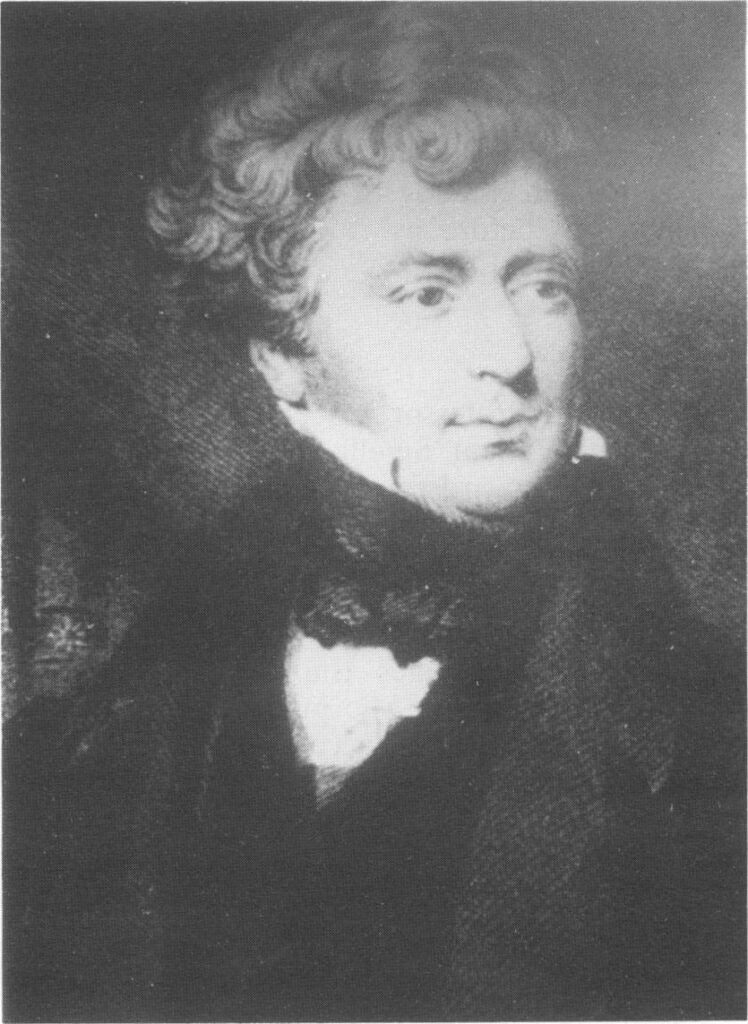James Blundell (1790-1878)

James Blundell, MD, was born in 1790 in London, and graduated from the University of Edinburgh with his medical degree in 1813. He taught midwifery at Guy’s Hospital in 1814 to 1834, and he is remembered as a preeminent lecturer on obstetrics and the diseases of women, publishing his obstetric lectures as “The Principles and Practice of Obstetricy” in 1834. In addition to his work as Professor of Obstetrics, he was a leading physiologist and became a fellow of the Royal College of Physicians in 1838. Remarkably, his works contain a clear description of the endotracheal intubation (by feel) and artificial respiration of severely asphyxiated infants.
“…. when the foetus is still-born, the artificial respiration should be diligently tried . . . The only mode of performing this operation effectually is by means of a small instrument, the tracheal pipe, which I think every accoucheur should carry along with him to a labour. The tracheal pipe is a little tube of silver, designed to pass into the trachea, its end closed like a catheter, with a long, broad fissure on either side to give free vent to air and mucus. The closed extremity and lateral openings I prefer, as there is less risk of injuring the delicate membrane of the trachea, if a terminal aperture do not exist. In introducing this instrument there is some difficulty at first, if you do not manoeuvre rightly; yet every moment is of the greatest importance, for while you are blundering the child is dying.
“Now not to detain you needlessly, I may be allowed to observe, that my own method of operating is the following:- I pass the fore-finger of my left hand down upon the root of the tongue and into the rima glottidis, and then using the tube with the right hand, I slide it along the surface of the finger, used as a director, till reaching the rima I insert the tube at the moment when the finger is with-drawn from it, afterwards feeling on the front of the neck whether the instrument is lying in the trachea or the oesophagus. This done, you may take the child into your hands, and from your own lungs you may inflate the lungs of the foetus, emptying them afterwards by means of double pressure of the hand, on the thorax I mean, and the abdomen, the latter pressure being necessary in order to urge upwards the diaphragm. Operating in this manner, you may execute the artificial respiration with the best success. Five-and-twenty, or thirty respirations there ought to be in a minute, the new-born child breathing faster than an adult….
Never hastily despair of the means of resuscitation. Many a foetus is laid aside as dead which, by a diligent use of resuscitants, might have been saved.”
This fascinating passage demonstrates that the concept and basic techniques of newborn intubation and ventilation were well understood by at least one person over a hundred years before it became a standard of care in our own lifetimes. Blundell also made important contributions to the field of abdominal surgery, the understanding of puerperal sepsis, and the use of blood transfusion for postpartum hemorrhage. He performed the successful human to human transfusion in 1818, and reported it in Lancet in 1829. He was truly a man ahead of his time, and sad to say, also ahead of the technologic advances which would have made his techniques practical at scale.
Blundell took an early retirement from practice in 1847, and lived to the advanced age of 87. He never married, but lived with his grand niece Mary Ann Harriet Noyes When he passed away on January 15, 1878 in London, he left behind a large fortune amassed from his private practice and significant bequests, most of which went to his niece Sarah Haighten Noyes.
- James Blundell (Wikipedia)
- Dr. James Blundell and Neonatal Resuscitation, by P. M. Dunn, Arch. Dis. Children, April 1989.
Last Updated on 07/09/23